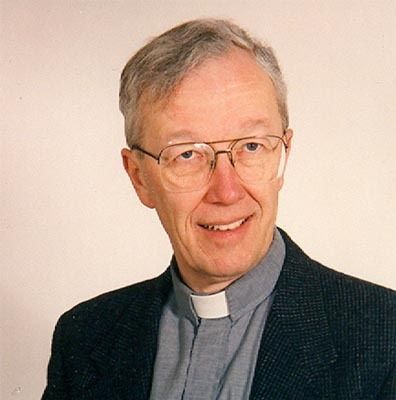Mendham Victim and Others Talk about "Spotlight" and Clergy Sexual Abuse
By Phil Garber
It was just too painful to see it alone, so Bill Crane asked his wife, Jane, to go with him to see the film, “Spotlight.” Monsignor Kenneth Lasch said he knew seeing the film would trigger many difficult memories so he also needed someone to help him get through it. And Richard Sipe said he cried at the point in the movie when the Boston Globe‘s editor, Marty Baron, tells his staff that he wants to expose the system, and not just individuals, that allowed priests to go unpunished while they sexually abused young boys. “Spotlight” is the story of the Boston Globe’s Pulitzer Prize winning investigation into cases of widespread and systemic child sex abuse in the Boston area by numerous Roman Catholic priests. The Globe investigation sparked similar probes around the nation and the world. It touched locally when a former priest at St. Joseph Church in Mendham, James Hanley, was defrocked for having abused multiple young boys. In addition to the priests who have been defrocked and prosecuted, the National Catholic Reporter found that clergy abuse has cost the Catholic Church in America $4 billion since 1950 in settlements, therapy for victims, and other costs. At the conclusion of the film, a list is shown on the screen of dozens of communities across the nation where priests were found to have sexually abused children. Among the towns noted is Mendham. Various people who were touched by the real crisis of sexual abuse by priests were asked to comment on the film on the eve of the Academy Awards on Feb. 28. The film is nominated for Best Picture of the Year. The Roman Catholic Diocese of Paterson did not respond to an email for comment on the film. Victim Advocate Crane, formerly of Mendham, was among those who were sexually assaulted by Hanley. Crane now lives in Oregon where he is leader of the state chapter of Survivors Network of those Abuse by Priests or SNAP. Hanley was defrocked in 2003 after admitting in a civil lawsuit that he had sexually abused about a dozen child parishioners in Mendham and Pompton Plains between 1968 and 1982. he was not criminally charged because of the statute of limitations. “I knew it would stir up quite a bit of emotion,” Crane said on Friday. “I was amazed at how accurate and real it was, particularly from the survivors’ perspective. It should be mandatory to see for everyone from elementary to high schools. No diocese has turned in a priest so it’s still going on. The Catholic Church was forced to do the right thing.” Crane said he identified with Phil Saviano, founder of the New England Chapter of SNAP, who was among the key sources for the Spotlight investigation. Saviano, who was abused by a priest as a child, is portrayed in the film by Neal Huff. “Phil Saviano was no different than me in the early 1990s,” Crane said. “The same script took place in every diocese across America. But it’s not done, our work with accountability and the hierarchy of the church, is not done.” Crane said he knows well how the Catholic Church responded to allegations of clergy sexual abuse. He said the film portrayed the issue spot on. “They had all the information but they were all anesthetized by the Catholic Church in Boston,” Crane said. Particularly riveting for Crane were scenes where Spotlight reporter Mike Rezendes, played by Mark Ruffalo, is interviewing one victim who felt such shame and anger for having been abused that he only found relief with heroin. In a dramatic moment, the victim agrees to let Rezendes use his name in the story. Jane Crane said the film showed how the Catholic Church dealt with the scandal. “It made the whole scenario really clear,” Jane Crane said. “How the priests were shuffled around and swept under the table and how everyone had each other’s backs.” Bill Crane said he remains active in helping people who were abused by priests. He also was instrumental in creation of a memorial in 2004 to abuse victims at St. Joseph Church. The memorial was vandalized in 2011 and damaged again in 2013 and has still not been repaired and Crane blames the church. “It sends a negative message from one of the wealthiest communities in the nation,” Crane said. Lasch was the pastor for 20 years at St. Joseph Church until he retired in 2004. He followed Hanley and was among the most vocal supporters of people who had been sexually victimized by priests and was instrumental in forming SNAP. Though he is no longer active with St. Joseph, Lasch has not stopped talking. He also has been undergoing therapy for many years for post traumatic stress disorder stemming from his work with the sex abuse victims. “The film was difficult for me to see,” Lasch said. “I went with someone else.” Although he said the film was well-done and factual, he felt one issue was somewhat misleading. That involved the impression that the victims were primed to be victimized because they were all from dysfunctional families. “But a lot of the victims were from functional families and not from difficult situations,” Lash said. “Not every victim was victimized because of unsual circumstances at home. They came from decent families.” Lash also said many who see the film might believe that the scandal is “old history and that all the bishops have been held accountable.” While there have been changes in monitoring of priests by the church, Lasch said the church still has problems with transparency. He also said that the scandal has had unfortunate reverberations among the good priests who have to be extremely careful not to do anything that might have a scent of impropriety. “It’s a shame that priests have to be more guarded,” Lash said.”But by and large, people trust in priests hasn’t been hurt.” Sipe, 83, of San Diego, Calif., is a retired priest and psychologist, who helped guide the Spotlight reporters in their investigation. He has spent 40 years treating and studying the sexual behavior of priests and got involved with the Spotlight team in 2000. Sipe studied about 500 cases for his 1990 study of celibacy, “A Secret World.” At one point in the film, Richard Jenkins who portrays Sipe, tells the team over the telephone that he had determined that 6 percent of priests act out sexually with children. Sipe said he was regularly forwarded the film scripts and that the director was “scrupulous” in sticking with the real facts of the story. Sipe said the critical moment in the movie came when watched as the Globe’s editor, Marty Baron, tells his staff that he wants to expose the system, and not just individuals. “When it came to that statement, I cried,” Sipe said. The former seminarian said the fundamental cause of the scandal has not changed. “They (the church) are as defensive as ever because they have to protect each other,” Sipe said. “To make changes, they have to expose past or present sexual liaisons. How can they be objective? In my experience of careful observations, this kind of thing goes on over and over again.” There is only way the church will ever really deal with the issue of sexual abuse by its priests and Sipe said it is simply said but not done. “First of all the church has to be honest,” Sipe said. “They are so resistive over and over and over.”
|
.
Any original material on these pages is copyright © BishopAccountability.org 2004. Reproduce freely with attribution.

